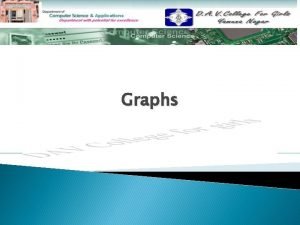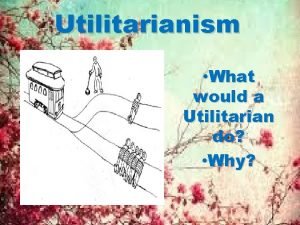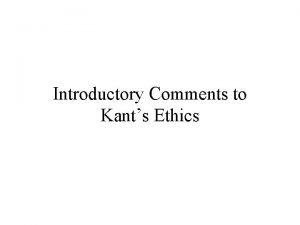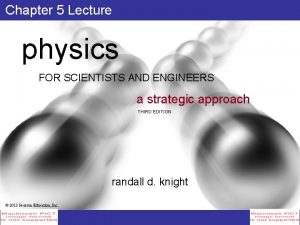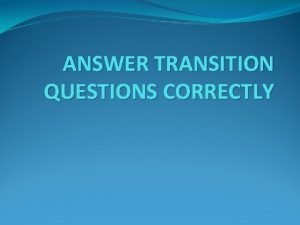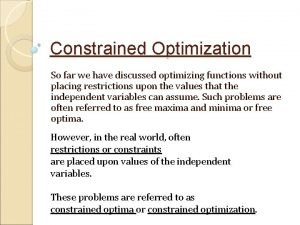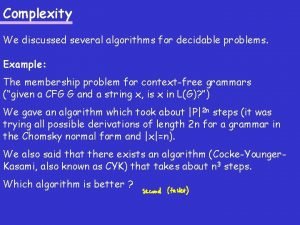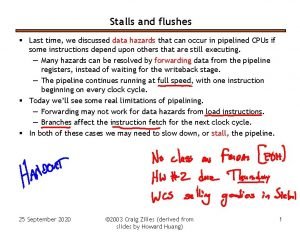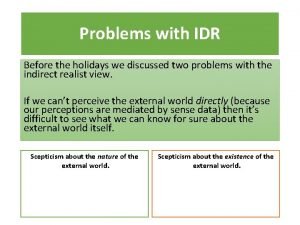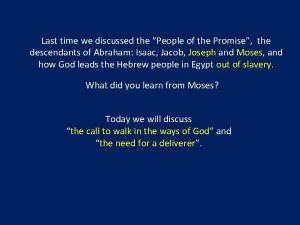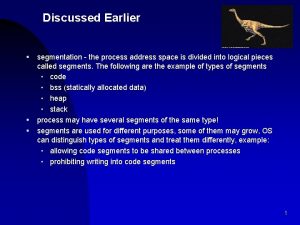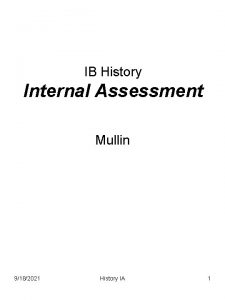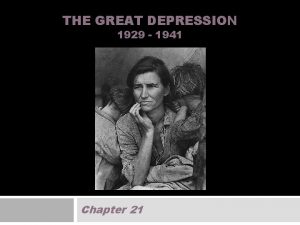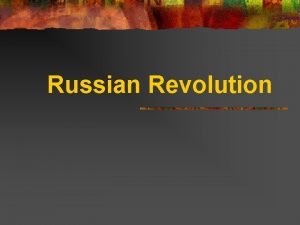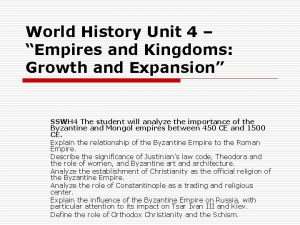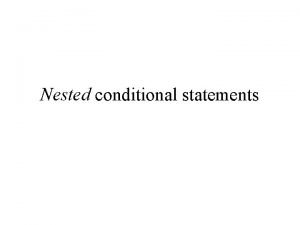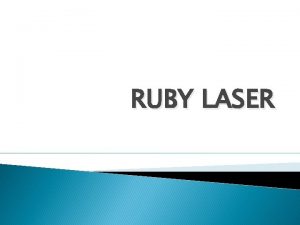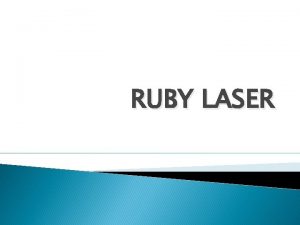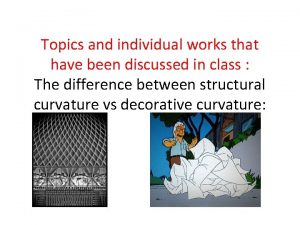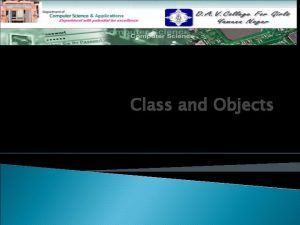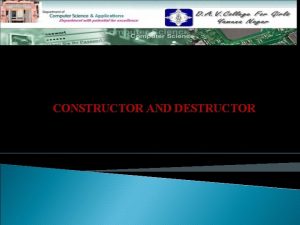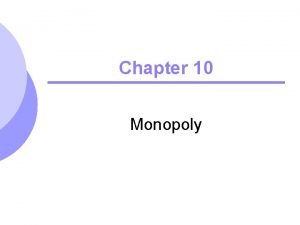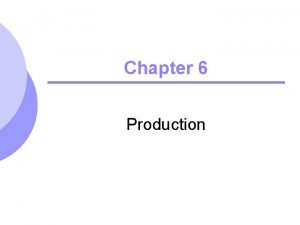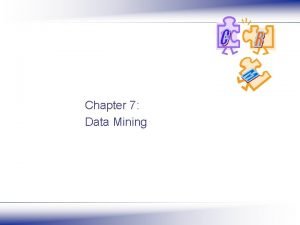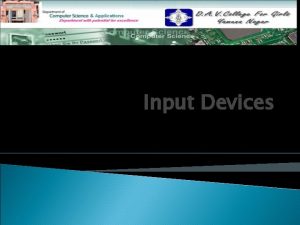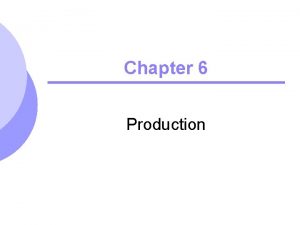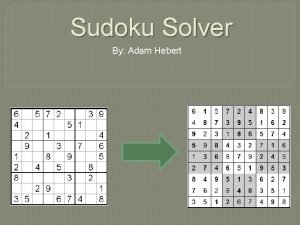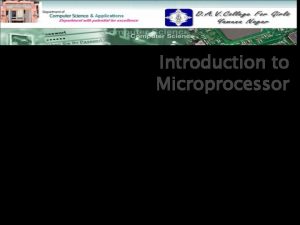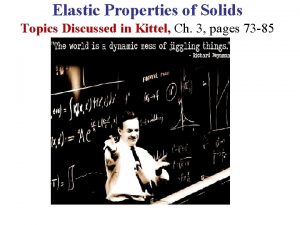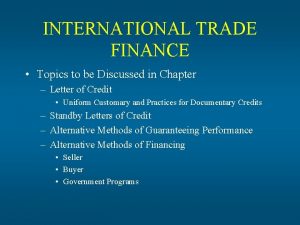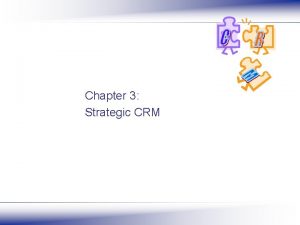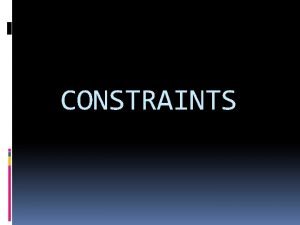Topics discussed the history and applications of AI

































































- Slides: 65

Topics discussed the history and applications of AI, logical reasoning state space searching heuristic searching game playing expert systems problem solving methods Reasoning with uncertainty CS 3754 Class Notes, John Shieh, 2012 1

Introduction to AI Intelligence means: a system can adapt itself to novel situations, has the capacity to reason, to understand the relationships between facts, to discover meanings, to recognize truth, and to learn. Artificial intelligence is: the science of making machines do things that would require intelligence if done by men. CS 3754 Class Notes, John Shieh, 2012 2

Fig 1. 1 The Turing test. CS 3754 Class Notes, John Shieh, 2012 3

Two most fundamental problems of AI • knowledge representation • problem-solving technique, such as search CS 3754 Class Notes, John Shieh, 2012 4

Important Research and Application Areas 1. 2. 1 Game Playing 1. 2. 2 Automated Reasoning and Theorem Proving 1. 2. 3 Expert Systems 1. 2. 4 Natural Language Understanding and Semantic Modelling 1. 2. 5 Modelling Human Performance 1. 2. 6 Planning and Robotics 1. 2. 7 Languages and Environments for AI 1. 2. 8 Machine Learning 1. 2. 9 Alternative Representations: Neural Nets and Genetic Algorithms CS 3754 Class Notes, John Shieh, 2012 5

A representation scheme should: a) Be adequate to express all of the necessary information. b) Support efficient execution of the resulting code. c) Provide a natural scheme for expressing the required knowledge. CS 3754 Class Notes, John Shieh, 2012 6

For propositional expressions P, Q and R: ¬ (¬ P) ≡ P (P Q) ≡ (¬P → Q) The contrapositive law: (P → Q) ≡ (¬Q → ¬P ) De Morgan’s law: ¬ (P Q) ≡ (¬P ¬Q) and ¬(P Q) ≡ (¬P ¬Q ) The commutative laws: (P Q) ≡ (Q P) and (P Q) ≡ (Q P) The associative law: ((P Q) R) ≡ (P (Q R)) The distributive law: P (Q R) ≡ (P Q) (P R) CS 3754 Class Notes, John Shieh, 2012 7

CS 3754 Class Notes, John Shieh, 2012 8

CS 3754 Class Notes, John Shieh, 2012 9

CS 3754 Class Notes, John Shieh, 2012 10

CS 3754 Class Notes, John Shieh, 2012 11

CS 3754 Class Notes, John Shieh, 2012 12

CS 3754 Class Notes, John Shieh, 2012 13

• First-order predicate calculus allows quantified variables to refer to objects in the domain of discourse, and not to predicate or functions. • Almost any grammatically correct English sentence may be represented in first-order predicate calculus. • The limitation of the predicate calculus is that it is difficult to represent possibility, time, and belief. CS 3754 Class Notes, John Shieh, 2012 14

CS 3754 Class Notes, John Shieh, 2012 15

CS 3754 Class Notes, John Shieh, 2012 16

CS 3754 Class Notes, John Shieh, 2012 17

Unification • It is an algorithm for determining the substitutions needed to make two predicate calculus expressions match. • A variable cannot be unified with a term containing that variable. The test for it is called the occurs check. CS 3754 Class Notes, John Shieh, 2012 18

CS 3754 Class Notes, John Shieh, 2012 19

Resolution refutation proofs involve the following steps: CS 3754 Class Notes, John Shieh, 2012 20

Algorithm to convert to clausal form (1) 1. Eliminate conditionals →, using the equivalence P → Q = ¬P Q e. g, ( X) (p(X) ( Y) (f(Y) → h(X, Y))) becomes ( X) (p(X) ( Y) (¬f(Y) h(X, Y))) 2. Eliminate negations or reduce the scope of negation to one atom. e. g. , ¬ ¬ P = P ¬(P Q) = ¬P ¬Q ¬ ( X) p(X) = ( X) ¬ p(X) • Standardize variables within a WFF so that the bound or dummy variables of each quantifier have unique names. e. g. , ( X) ¬ p(X) ( X) p(X) is replaced by ( X) ¬ p(X) ( Y) p(Y) CS 3754 Class Notes, John Shieh, 2012 21

Algorithm to convert to clausal form (2) 4. Eliminate existential quantifiers, by using Skolem functions, named after the Norwegian logician Thoralf Skolem. e. g. , ( X) m(X) is replaced by m(a) ( X) ( Y) k(X, Y) is replaced by ( X) k(X, f(X)) 5. Convert the WFF to prenex form which is a sequence of quantifiers followed by a matrix. e. g. , ( X) (p(X) ( Y) (¬f(Y) h(X, Y))) becomes ( Y) (p(a) (¬f(Y) h(a, Y))) 6. Convert the matrix to conjunctive normal form, which is a conjunctive of clauses. Each clause is a disjunction. e. g. , P (Q R) = (P Q) (P R) 7. Drop the universal quantifiers. e. g. , WFF(*) becomes p(a) (¬f(Y) h(a, Y)) 8. Eliminate the conjunctive signs by writing the WFF as a set of clauses e. g. , WFF(*) becomes p(a) (¬f(Y) h(a, Y)) 9. Rename variables in clauses, if necessary, so that the same variable name is only used in one clause. e. g. , p(X) q(X) k(X, Y) and ¬p(X) q(Y) become p(X) q(X) k(X, Y) and ¬p(X 1) q(Y 1) CS 3754 Class Notes, John Shieh, 2012 22

Fig 13. 3 Resolution proof for the “dead dog” problem. CS 3754 Class Notes, John Shieh, 2012 23

CS 3754 Class Notes, John Shieh, 2012 24

Fig 13. 5 One refutation for the “happy student” problem. CS 3754 Class Notes, John Shieh, 2012 25

State Space Search The goal states are described by • a measurable property of the states, or • a property of the path developed in the search. CS 3754 Class Notes, John Shieh, 2012 26

To design a search algorithm, we must consider • • Is it guaranteed to find a solution? Is it guaranteed to find an optimal solution? What is its complexity? Whether the complexity can be reduced? Search algorithms must detect and eliminate loops from potential solution paths. CS 3754 Class Notes, John Shieh, 2012 27

Fig 3. 12 State space in which goal-directed search effectively prunes extraneous search paths. CS 3754 Class Notes, John Shieh, 2012 28

Fig 3. 13 State space in which data-directed search prunes irrelevant data and their consequents and determines one of a number of possible goals. CS 3754 Class Notes, John Shieh, 2012 29

• Data-driven and goal-driven searches search the same state space graph; but, the order and actual number of state searched can be differ. • The preferred strategy is determined by the properties of the problem itself: – the complexity of the rules used for changing states – the shape of the state space – the nature and availability of the data CS 3754 Class Notes, John Shieh, 2012 30

Fig 6. 12 Bidirectional search meeting in the middle, eliminating much of the space examined by unidirectional search. CS 3754 Class Notes, John Shieh, 2012 31

• Backtracking is a technique for systematically trying all different paths through a state space – For a data-driven search, it begins at the start state and pursues a path until it reaches either a goal or a "dead end". • If it finds a goal, it quits and returns the solution path. • Otherwise, it "backtracks" to the most recent node on the path having unexamined siblings and continues down one of these branches. – For a goal-driven search, it takes a goal be the root and evaluates descendants back in an attempt to find a start state. – The depth-first and breadth-first searches exploit the ideas used in backtrack. CS 3754 Class Notes, John Shieh, 2012 32

Function backtrack algorithm CS 3754 Class Notes, John Shieh, 2012 33

Fig 3. 14 Backtracking search of a hypothetical state space. CS 3754 Class Notes, John Shieh, 2012 34

Fig 3. 15 Graph for breadth - first search example CS 3754 Class Notes, John Shieh, 2012 35

Function depth_first_search algorithm CS 3754 Class Notes, John Shieh, 2012 36

The choice of depth-first or breadth-first search depends on the problem • the importance of finding the optimal path to a goal • the branching of the state space • the available time and space resources • the average length of paths to a goal node CS 3754 Class Notes, John Shieh, 2012 37

A trade-off – Depth-first search with a depth bound • The depth bound forces a failure on a search path once it gets below a certain level. This causes a breadth like sweep of the space at that depth level. • It is preferred when time constraints exist or a solution is known within a certain depth. • It is guaranteed to find a shortest path to a goal. • Depth-first iterative deepening (Korf 1987) -- depth bound increases one at each iteration CS 3754 Class Notes, John Shieh, 2012 38

• For all uniformed search algorithms, the worst-case time complexity is exponential. • The reasoning with the predicate calculus can be represented by and/or graphs. – The and/or graph is an extension of the basic state space model. – They are used for many AI problems, such as theorem proving and expert systems. CS 3754 Class Notes, John Shieh, 2012 39

Fig 3. 23 And/or graph of a set of propositional calculus expressions. CS 3754 Class Notes, John Shieh, 2012 40

CS 3754 Class Notes, John Shieh, 2012 41

Fig 4. 17 Open and closed as they appear after the 3 rd iteration of heuristic search CS 3754 Class Notes, John Shieh, 2012 42

CS 3754 Class Notes, John Shieh, 2012 43

CS 3754 Class Notes, John Shieh, 2012 44

Fig 4. 18 Comparison of state space searched using heuristic search with space searched by breadth-first search. The proportion of the graph searched heuristically is shaded. The optimal search selection is in bold. Heuristic used is f(n) = g(n) + h(n) where h(n) is tiles out of place. CS 3754 Class Notes, John Shieh, 2012 45

Fig 4. 20 Exhaustive minimax for the game of nim. Bold lines indicate forced win for MAX. Each node is marked with its derived value (0 or 1) under minimax. CS 3754 Class Notes, John Shieh, 2012 46

Fig 4. 21 Minimax to a hypothetical state space. Leafstates show heuristic values; internal states show backed-up values. CS 3754 Class Notes, John Shieh, 2012 47

Fig 4. 26 Alpha-beta pruning applied to state space of Fig 4. 21. States without numbers are not evaluated. CS 3754 Class Notes, John Shieh, 2012 48

Fig 6. 1 A production system. Control loops until working memory pattern no longer matches the conditions of any productions. CS 3754 Class Notes, John Shieh, 2012 49

Fig 6. 3 The 8 -puzzle as a production system. CS 3754 Class Notes, John Shieh, 2012 50

Fig 8. 1 architecture of a typical expert system for a particular problem domain. CS 3754 Class Notes, John Shieh, 2012 51

Guidelines to determine whether a problem is appropriate for expert system solution: 1. The need for the solution justifies the cost and effort of building an expert system. 2. Human expertise is not available in all situations where it is needed. 3. The problem may be solved using symbolic reasoning. 4. The problem domain is well structured and does not require commonsense reasoning. 5. The problem may not be solved using traditional computing methods. 6. Cooperative and articulate experts exist. 7. The problem is of proper size and scope. CS 3754 Class Notes, John Shieh, 2012 52

A small expert system for analysis of automotive problems. Rule 1: if the engine is getting gas, and the engine will turn over, then the problem is spark plugs. Rule 2: if the engine does not turn over, and the lights do not come on the problem is battery or cables. if the engine does not turn over, and the lights do come on the problem is the starter motor. if there is gas in the fuel tank, and there is gas in the carburetor then the engine is getting gas. Rule 3: Rule 4: CS 3754 Class Notes, John Shieh, 2012 53

Fig 8. 8 The and/or graph searched in the car diagnosis example, with the conclusion of Rule 4 matching the first premise of Rule 1. CS 3754 Class Notes, John Shieh, 2012 54

The following dialogue begins with the computer asking the user about the goals present in working memory. Gas in fuel tank? Yes Gas in carburetor? Yes Engine will turn over? Why It has been established that: 1. The engine is getting gas, 2. The engine will turn over, Then the problem is the spark plugs. How the engine is getting gas This follows from rule 4: if gas in fuel tank, and gas in carburetor then engine is getting gas in fuel tank was given by the user gas in carburetor was given by the user CS 3754 Class Notes, John Shieh, 2012 55

Heuristic and control in expert systems • the inference engine • the structure of the rules in the knowledge base, e. g. , the order of the premises • the contents of the rules CS 3754 Class Notes, John Shieh, 2012 56

Problem Solver • Problem Solving is the process of developing a sequence of actions to achieve a goal. • This broad definition admits all goal directed AI programs to the ranks of problem solvers. • Some more problem solving methods: – – – Generate and Test Means-Ends Analysis Problem Reduction Decision Table Decision Tree • Few real problems can be solved by a single problem-solving method. Accordingly, it is often seen that problem-solving methods are working together. CS 3754 Class Notes, John Shieh, 2012 57

Generate and Test CS 3754 Class Notes, John Shieh, 2012 58

CS 3754 Class Notes, John Shieh, 2012 59

CS 3754 Class Notes, John Shieh, 2012 60

CS 3754 Class Notes, John Shieh, 2012 61

Planning • Planning means deciding on a course of actions before acting. • Failure to plan can result in less than optimal problem solving. • Common-used approaches to planning: – – Nonhierarchical planning Hierarchical planning Script-based planning Opportunistic planning CS 3754 Class Notes, John Shieh, 2012 62

Fig 6. 13 Blackboard architecture CS 3754 Class Notes, John Shieh, 2012 63

Reasoning in Uncertain Situations • Uncertainty results from: • the use of abductive inference, • attempts to reason with missing or unreliable data. CS 3754 Class Notes, John Shieh, 2012 64

Some ways of managing the uncertainty 1. 2. 3. 4. Bayesian probability theory Stanford certainty theory Zadeh's fuzzy set theory nonmonotonic reasoning CS 3754 Class Notes, John Shieh, 2012 65
 Topics to be discussed
Topics to be discussed Examples of trends in media and information
Examples of trends in media and information As discussed
As discussed As discussed
As discussed The reform discussed by governor johnson in this excerpt
The reform discussed by governor johnson in this excerpt Which of these is not a force discussed in this chapter?
Which of these is not a force discussed in this chapter? The paragraph preceding the passage most probably discussed
The paragraph preceding the passage most probably discussed Lets have a recap
Lets have a recap So far we have discussed
So far we have discussed We discussed the problem
We discussed the problem Stalls
Stalls As we discussed before
As we discussed before Last time we discussed
Last time we discussed As discussed earlier meaning
As discussed earlier meaning Having discussed
Having discussed Sample ib history ia
Sample ib history ia Http://www.history.com/topics/great-depression
Http://www.history.com/topics/great-depression Https quizlet
Https quizlet Http://www.history.com/topics/russian-revolution
Http://www.history.com/topics/russian-revolution (http //www.history.com/topics/byzantine-empire
(http //www.history.com/topics/byzantine-empire Leaving cert history topics
Leaving cert history topics Music history topics
Music history topics Hình ảnh bộ gõ cơ thể búng tay
Hình ảnh bộ gõ cơ thể búng tay Lp html
Lp html Bổ thể
Bổ thể Tỉ lệ cơ thể trẻ em
Tỉ lệ cơ thể trẻ em Voi kéo gỗ như thế nào
Voi kéo gỗ như thế nào Thang điểm glasgow
Thang điểm glasgow Chúa sống lại
Chúa sống lại Các môn thể thao bắt đầu bằng tiếng nhảy
Các môn thể thao bắt đầu bằng tiếng nhảy Thế nào là hệ số cao nhất
Thế nào là hệ số cao nhất Các châu lục và đại dương trên thế giới
Các châu lục và đại dương trên thế giới Công của trọng lực
Công của trọng lực Trời xanh đây là của chúng ta thể thơ
Trời xanh đây là của chúng ta thể thơ Mật thư anh em như thể tay chân
Mật thư anh em như thể tay chân Làm thế nào để 102-1=99
Làm thế nào để 102-1=99 độ dài liên kết
độ dài liên kết Các châu lục và đại dương trên thế giới
Các châu lục và đại dương trên thế giới Thơ thất ngôn tứ tuyệt đường luật
Thơ thất ngôn tứ tuyệt đường luật Quá trình desamine hóa có thể tạo ra
Quá trình desamine hóa có thể tạo ra Một số thể thơ truyền thống
Một số thể thơ truyền thống Bàn tay mà dây bẩn
Bàn tay mà dây bẩn Vẽ hình chiếu vuông góc của vật thể sau
Vẽ hình chiếu vuông góc của vật thể sau Biện pháp chống mỏi cơ
Biện pháp chống mỏi cơ đặc điểm cơ thể của người tối cổ
đặc điểm cơ thể của người tối cổ Thứ tự các dấu thăng giáng ở hóa biểu
Thứ tự các dấu thăng giáng ở hóa biểu Vẽ hình chiếu đứng bằng cạnh của vật thể
Vẽ hình chiếu đứng bằng cạnh của vật thể Phối cảnh
Phối cảnh Thẻ vin
Thẻ vin đại từ thay thế
đại từ thay thế điện thế nghỉ
điện thế nghỉ Tư thế ngồi viết
Tư thế ngồi viết Diễn thế sinh thái là
Diễn thế sinh thái là Dot
Dot Số nguyên tố là gì
Số nguyên tố là gì Tư thế ngồi viết
Tư thế ngồi viết Lời thề hippocrates
Lời thề hippocrates Thiếu nhi thế giới liên hoan
Thiếu nhi thế giới liên hoan ưu thế lai là gì
ưu thế lai là gì Khi nào hổ con có thể sống độc lập
Khi nào hổ con có thể sống độc lập Khi nào hổ con có thể sống độc lập
Khi nào hổ con có thể sống độc lập Sơ đồ cơ thể người
Sơ đồ cơ thể người Từ ngữ thể hiện lòng nhân hậu
Từ ngữ thể hiện lòng nhân hậu Thế nào là mạng điện lắp đặt kiểu nổi
Thế nào là mạng điện lắp đặt kiểu nổi Also history physical
Also history physical Informative and surprising essay topics
Informative and surprising essay topics
